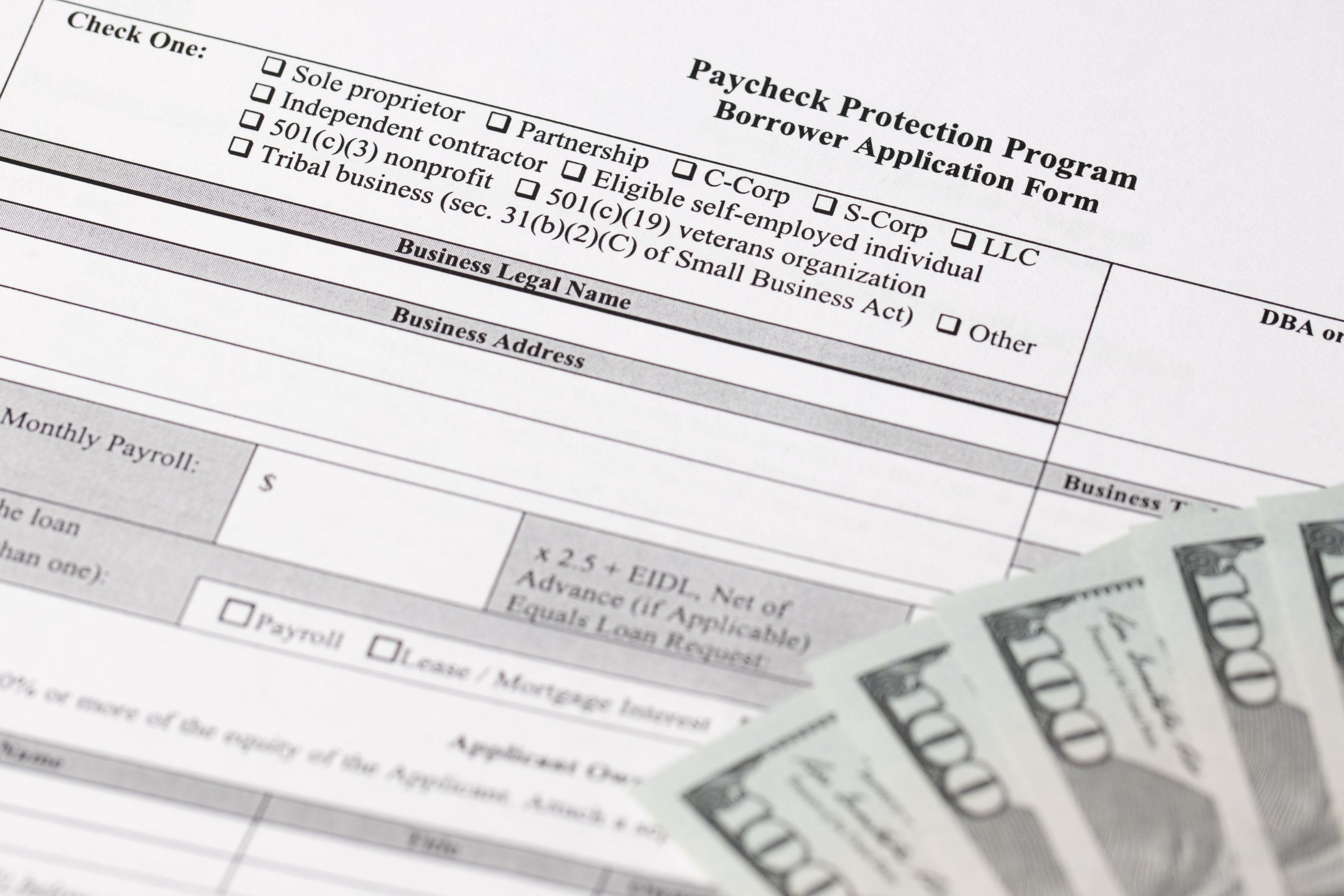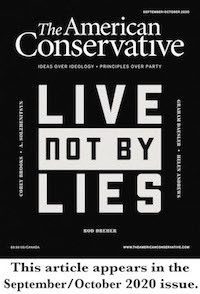How That COVID Stimulus Bailed Out Big Business

In the fall of 2008, Hank Paulson, George W. Bush’s treasury secretary, called the CEOs of nine of the nation’s largest banks into a room. The economy was then skidding towards a cliff: Paulson had bailed out Bear Stearns, allowed Lehman Brothers to go under, and watched as financial contagion spread across the world. He now informed the bankers that in order to prevent further wreckage, they were being bailed out, whether they liked it or not. The federal government would buy hefty shares in their banks, while making some curtailments to executive pay and dividends.
There were dissenters. The CEO of Wells Fargo said he didn’t need the money and questioned whether the federal government could pressure him to comply. In the end, though, all nine bankers signed on the dotted line. The bailouts were distributed through the Troubled Asset Relief Program (TARP), which was to become one of the most controversial government initiatives in history, fueling populist rage that manifested itself in both the Tea Party and the Occupy Wall Street movement.
Now, 12 years later, we have another national economic crisis, this one triggered by the coronavirus pandemic, and it’s brought back to the fore the memory of 2008. This time the banks themselves weren’t bailed out—their executives still wince at the memory—but they were deputized by the federal government to distribute $349 billion in stimulus through the Paycheck Protection Program (PPP). That money, allotted after Congress passed the CARES Act, was supposed to go to small businesses on a first-come, first-serve basis in order to protect jobs. What happened instead has looked like a textbook example of crony capitalism, as funds flowed to big corporations at the expense of those that desperately needed help.
In financial parlance, there’s a distinction between two types of banking: retail and commercial. Retail banking is what we typically think of when we skip down to the local PNC branch: deposit accounts, ATMs, and individual loans, whereas commercial banking deals with larger institutions and their corresponding services like benefits plans. Reduced to shorthand, retail banking refers to small businesses, many of them run by single persons or families, while commercial banking signifies larger companies, corporations, even governments.
According to The New York Times, which cited interviews with bank employees and executives, early PPP lending heavily favored commercial clients over retail ones. At JPMorgan Chase, nearly all commercial customers who’d applied for loans had received them as of April 22, while only one in 15 retail applicants had. According to the Small Business Administration (SBA), the government agency that manages PPP, during the first round of lending, loans of more than $1 million made up 45 percent of the dollars dispersed. The results drew nationwide outrage. Ruth’s Chris, the steakhouse chain, received $20 million from PPP (it quickly returned the money). Fast food giant Shake Shack got $10 million (they also sent it back).
Meanwhile, smaller businesses—the ostensible raison d’être for PPP—were left jumping over hurdles and tangling with bureaucracy as precious days slipped away. Bank of America initially refused any loans to businesses with which it didn’t have a prior lending relationship; it later rescinded that policy amid customer fury, though it continued to deny applications from those who had borrowed from other banks. In contrast, wealthier clients were offered concierge services by many banks, with representatives personally navigating them through the paperwork. Rich customers at Citi didn’t even have to use the online portal; they just applied personally with their bankers who then submitted their applications for them.
The result was a two-tiered system that heavily favored those with means and access over those without them—which is to say, those who needed the money less over those who needed it more. This uneven distribution had not only class implications but racial ones. A study by the Federal Reserve Banks of Atlanta and Cleveland found that businesses owned by African Americans were 20 percent less likely to receive funds than were white-owned companies of comparable size and profitability. (And PPP wasn’t even the only CARES Act initiative that shafted the disadvantaged. Another program, which distributed money directly to individuals, allowed banks and collectors to garnish the checks if the recipients were in any kind of private debt. This ugly practice was later banned by some states, though far from all.)
In addition to featherbedding their existing clienteles, banks had another way to make money off of the CARES Act: lending fees. The legislation permitted financial institutions to charge 5 percent to process loans below $350,000, 3 percent for loans between $350,000 and $2 million, and 1 percent for loans above $2 million, according to The Wall Street Journal. Consequently, banks are expected to take in anywhere from $14.3 billion to $24.6 billion in fees, according to an analysis by Edwin Hu and Colleen Honigsberg. Just two banks—JPMorgan Chase and Bank of America—were expected to make between $1.5 billion and $2.6 billion. (In fairness, some of the larger banks have pledged to donate these profits, which are likely to be relatively small anyway, given the heavy costs of implementing PPP lending.)
As reports of lending inequality spread throughout the media, House Democrats, led by Congressman Jim Clyburn, sent a letter to the banks, the Treasury, and the SBA, expressing concern and demanding that the identities of recipients of generous loans be disclosed. Treasury Secretary Steve Mnuchin had initially said that this information would be kept proprietary. But the Trump administration later U-turned, and an extensive public database of all PPP loans equal to or exceeding $150,000 was set up. From there came even more allegations of abuse. Among the recipients revealed by the database were investment companies like Semper Capital Management and Domini Impact Investments and politically connected white-shoe law firms like Boies Schiller Flexner. The Catholic Church was found to have netted a total of at least $1.4 billion, some of which went to dioceses struggling to pay off sexual abuse settlements.
With “closed” signs appearing in windows and unemployment applications gusting in, it’s enough to make you wonder whether guillotines are about to start appearing in public squares. Yet it’s also worth pointing out that none of this necessarily invalidates the need for government stimulus, nor does it preclude the possibility that the CARES Act prevented real damage to the economy. By the time PPP was finished, about 87 percent of the total loans distributed had amounted to $150,000 or less. Not every recipient was a cackling captain of industry twirling a cane and petting a dyspeptic-looking cat.
The banks’ position also isn’t totally unsympathetic. The CARES Act was a slipshod bill, rushed through Congress in response to a  crisis amid pressure to get money out as quickly as possible. According to Congressman Clyburn, the government didn’t even provide the banks with implementation guidance until two weeks after loan applications had started coming in and one day before the first round of money ran out. Sharpening headaches further was the fact that the PPP has three different oversight bodies, which some banks worried would ensnare them in a compliance nightmare.
crisis amid pressure to get money out as quickly as possible. According to Congressman Clyburn, the government didn’t even provide the banks with implementation guidance until two weeks after loan applications had started coming in and one day before the first round of money ran out. Sharpening headaches further was the fact that the PPP has three different oversight bodies, which some banks worried would ensnare them in a compliance nightmare.
Forced to improvise, wary of fraud and non-compliance, the banks went the safe route, prioritizing existing clients they trusted and could get money to quickly. That doesn’t excuse what happened, of course, but it does kick at least some of the blame back to the government. Why did it take the Treasury and SBA so long to issue guidance? Why didn’t the CARES Act dictate that more early money go to retail clients, given how susceptible they were to economic shock? Why, with the phantom of 2008 hovering over everything, did the rich and connected make out so well yet again?
What began as a well-intentioned way to help the vulnerable turned into yet another crony capitalist bonanza of unintended consequences and rent-seeking. And isn’t that just how it always is.
Comments